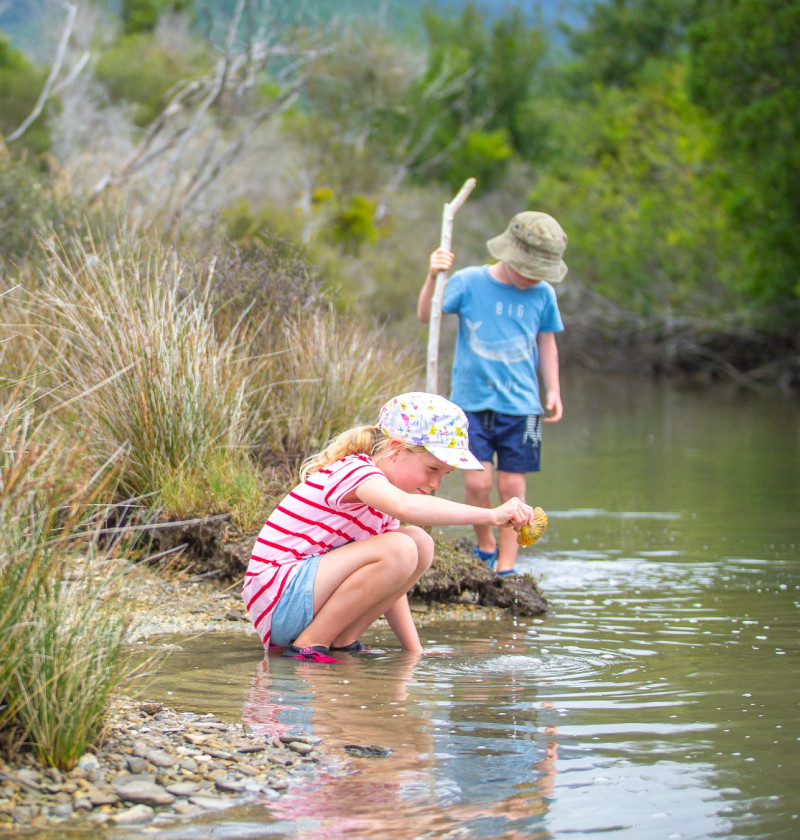Theme 1: Our ecosystems and biodiversity

The biodiversity of Aotearoa New Zealand is essential to our culture, identity, and well-being. The whole variety of native plants, animals, microorganisms, and the ecosystems they create, is unique to New Zealand and irreplaceable.

Image: iStock
Our native plants and animals are under pressure from all the issues identified in Environment Aotearoa 2019, including climate change, sedimentation, and urban development. When combined with the significant pressure from introduced species, this forms a set of ‘compounding pressures’ that can intensify the effects of individual pressures on animal and plant communities.
In this theme, we report on the state of our biodiversity, considering the loss and risk to species and ecosystems across land, freshwater, and marine environments.
Our unique native biodiversity is under significant pressure from introduced species, pollution, physical changes to our landscapes and coast, harvesting of wild species, and other factors. Almost 4,000 of our native species are currently threatened with or at risk of extinction.
The biodiversity of Aotearoa New Zealand is unique and vulnerable to changes we make to the environment. Many of the species found here are found nowhere else in the world.
Our biodiversity has declined significantly. At least 75 animal and plant species have become extinct since humans arrived in New Zealand. Marine, freshwater, and land ecosystems all have species at risk: 90 percent of seabirds, 76 percent of freshwater fish, 84 percent of reptiles, and 46 percent of vascular plants are currently threatened with or at risk of extinction.
The extinction risk has worsened for 86 species in the past 15 years. The conservation status has improved for 26 species in the past 10 years, but more than half require active management to stay that way. Kākāpō is one example.
For a small country, we have a very diverse range of unique ecosystems. Some are naturally rare (there were only a few even before people arrived, like volcanic dunes) and others are also uncommon internationally (like braided rivers). Many of our native ecosystems have been cleared or extensively altered, and this trend continues today.
People have changed the landscape and introduced new species. Farming and urban expansion have caused forests to be cleared and wetlands to be drained. In the process, habitats and species have been lost. Farming and urban expansion also create pollution, such as excess nutrients (like nitrogen) and sediment, which can degrade ecosystems and harm organisms. Taking water degrades our freshwater ecosystems (see Issue 6), while commercial fishing alters marine ecosystems and can accidentally kill threatened species (see Issue 7).
Introduced species threaten our native species through competition, predation, and diseases. Non-native plant species now outnumber natives here, and stoats, possums, and rats were present on more than 94 percent of New Zealand land in 2014.
New diseases also pose threats: myrtle rust, a disease that kills native plants like mānuka, pōhutukawa, and rātā, made it to our shores in 2017.
Climate change is already impacting some species by changing where they are found or creating conditions where invasive pests like wasps can live (see Issue 9).
Healthy ecosystems provide important functions that benefit us and our society. Native forests, for example, regulate the climate (by storing carbon), prevent erosion, and create nectar for honey production. Natural wetlands also provide important ecosystem services (benefits we receive from nature) such as purifying water by filtering out nutrients and sediments, regulating water flow during storms, and storing carbon as peat. Degraded habitats and a loss of species can make ecosystems less resilient to other changes and lead to further declines in biodiversity.
Degradation of our ecosystems and a loss of biodiversity can also impact our ability to connect with and use the environment. Native biodiversity provides mahinga kai (food provisioning) and materials for other purposes like raranga (weaving) and rongoā (medicinal uses). It also provides important indicators (like the timing and intensity of flowering) for kaitiaki, as well as being essential for maintaining and passing knowledge from one generation to another.
Losing biodiversity affects our sense of belonging and connection. We call ourselves ‘Kiwis’ and proudly use the silver fern (ponga) as a national symbol, so our identity suffers when we experience damaged or lost native species and ecosystems. Recreation opportunities and the connections we have to nature are also affected.


Read the long description for Ecosystems
A healthy ecosystem provides many benefits (services) that are essential for native plants and animals as well as our own well-being.
Supporting services
Regulating services
Biodiversity
Riparian zone
Cultural services
Provisioning services
Cultural value
Ecosystem health

Theme 1: Our ecosystems and biodiversity
April 2019
© Ministry for the Environment